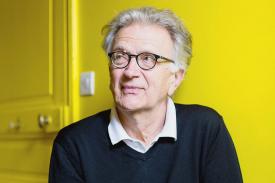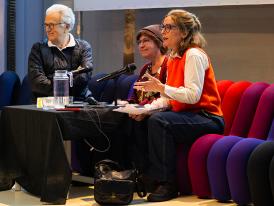Patrick Bouchain

He has collaborated with numerous artists, including Daniel Buren, Sarkis, and Bartabas. As an architect, his notable works include: the design of the Le Magasin cultural centre in Grenoble (1985), the Théâtre Zingaro in Aubervilliers (1988), Le Lieu Unique in Nantes (2000) in the former LU factories, the International Museum of Modest Arts in Sète (2000), the Académie Fratellini in Saint-Denis (2002), the conversion of La Condition Publique in Roubaix (2003) and Le Channel, Scène Nationale de Calais (2005) in the former slaughterhouses.
A pioneer in the redevelopment of industrial sites into cultural spaces, he has focused his work on the performing arts, mobility and the ephemeral. Fundamentally non-conformist, he practises HQH (Haute Qualité Humaine, or High Human Quality) architecture with the Construire agency (founded with Loïc Julienne and Nicole Condorcet), developing construction sites that are open to the public, true cultural events, with a constant questioning of standards. Since 2009, he has focused his work on applying these experiences to propose alternative ways of producing social housing through a project entitled ‘Le Grand Ensemble’ in several cities: Boulogne-sur-Mer, Tourcoing and Beaumont.
Patrick Bouchain has always considered transmission to be an integral part of his practice. In 2010, he created the ‘l'université foraine’ (fairground university), which aims to train students and elected officials to carry out constructive operations off the beaten track. In 2018, he set up ‘La Preuve par 7’ to develop projects on sites of various scales: a village, a town, a city, a suburb, a metropolis... He received the Grand Prix de l'Urbanisme in 2019.
